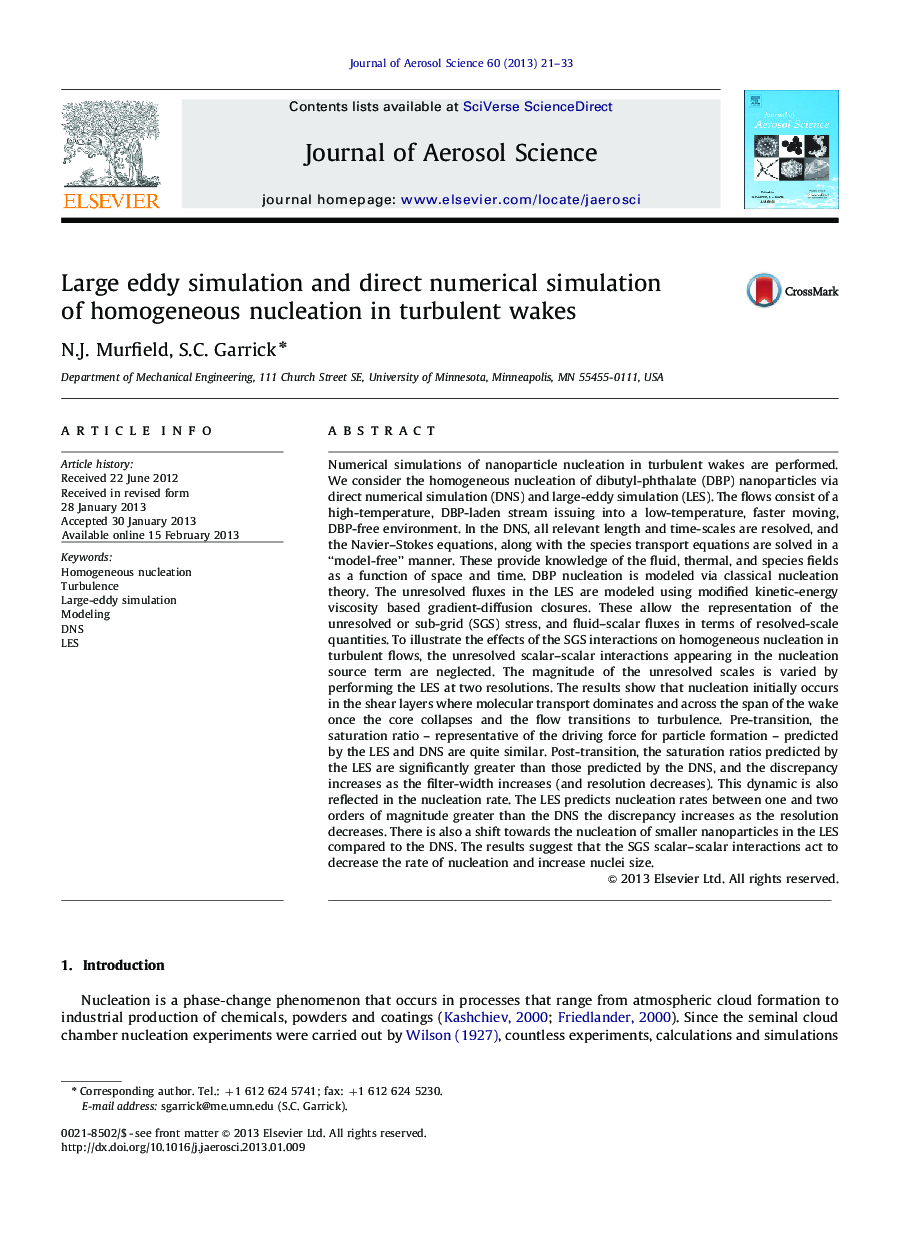| Article ID | Journal | Published Year | Pages | File Type |
|---|---|---|---|---|
| 4452445 | Journal of Aerosol Science | 2013 | 13 Pages |
Numerical simulations of nanoparticle nucleation in turbulent wakes are performed. We consider the homogeneous nucleation of dibutyl-phthalate (DBP) nanoparticles via direct numerical simulation (DNS) and large-eddy simulation (LES). The flows consist of a high-temperature, DBP-laden stream issuing into a low-temperature, faster moving, DBP-free environment. In the DNS, all relevant length and time-scales are resolved, and the Navier–Stokes equations, along with the species transport equations are solved in a “model-free” manner. These provide knowledge of the fluid, thermal, and species fields as a function of space and time. DBP nucleation is modeled via classical nucleation theory. The unresolved fluxes in the LES are modeled using modified kinetic-energy viscosity based gradient-diffusion closures. These allow the representation of the unresolved or sub-grid (SGS) stress, and fluid–scalar fluxes in terms of resolved-scale quantities. To illustrate the effects of the SGS interactions on homogeneous nucleation in turbulent flows, the unresolved scalar–scalar interactions appearing in the nucleation source term are neglected. The magnitude of the unresolved scales is varied by performing the LES at two resolutions. The results show that nucleation initially occurs in the shear layers where molecular transport dominates and across the span of the wake once the core collapses and the flow transitions to turbulence. Pre-transition, the saturation ratio – representative of the driving force for particle formation – predicted by the LES and DNS are quite similar. Post-transition, the saturation ratios predicted by the LES are significantly greater than those predicted by the DNS, and the discrepancy increases as the filter-width increases (and resolution decreases). This dynamic is also reflected in the nucleation rate. The LES predicts nucleation rates between one and two orders of magnitude greater than the DNS the discrepancy increases as the resolution decreases. There is also a shift towards the nucleation of smaller nanoparticles in the LES compared to the DNS. The results suggest that the SGS scalar–scalar interactions act to decrease the rate of nucleation and increase nuclei size.
► We perform large-eddy simulation (LES) of nucleation in turbulent wakes. ► We assess the performance of the turbulence/subgrid-scale closures via direct numerical simulation. ► We assess the effects of LES resolution on prediction of the formation rate and size of particles formed. ► Unresolved fluctuations act to decrease nanoparticle nucleation rate. ► Unresolved fluctuations act to decrease nanoparticle size.
